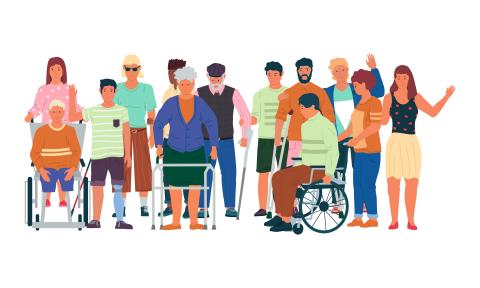
I am delighted to announce that NIH has published the Fiscal Years 2023–2027 NIH-Wide Strategic Plan for Diversity, Equity, Inclusion, and Accessibility (DEIA). I was privileged to co-lead the development of the plan, along with colleagues from the Office of Human Resources and the Office of Equity, Diversity, and Inclusion (EDI). The Strategic Plan articulates NIH’s commitment to embracing, strengthening, and integrating DEIA across all agency activities.
This first NIH-Wide DEIA Strategic Plan was developed by a working group of more than 100 staff members from NIH’s 27 institutes and centers and many offices within the Office of the Director. We are greatly indebted to this very talented group for all their time and effort. We are particularly grateful to Dr. Marina Volkov and team, of the Division of Program Coordination, Planning, and Strategic Initiatives (DPCPSI), who were the engine that kept this enormous effort on track.
The Strategic Plan describes how NIH will advance DEIA across its operations, workforce, and the research it supports in a transparent and accountable manner. The multifaceted, evidence-based approaches outlined in the Strategic Plan will enable NIH to achieve its vision of being a people-centered organization where everyone feels a sense of belonging when furthering the NIH mission. And as research shows, a diverse and inclusive workplace will enhance NIH’s ability to drive biomedical innovation.
The DEIA Strategic Plan is an umbrella for all NIH DEIA-related activities and encompasses COSWD’s 2022–2026 Strategic Plan activities. As NIH’s leader in the science of scientific workforce diversity, we will continue to advance foundational research, disseminate our findings, and act on this evidence as we support NIH’s efforts to embrace and integrate DEIA principles throughout the agency and NIH-funded institutions. Our Administrative Supplements to Recognize Excellence in DEIA Mentorship and Scientific Workforce Diversity Seminar Series are two of our most significant DEIA initiatives. I look forward to expanding our work and sharing our progress as we implement the Strategic Plan.
NIH strives to be a model of inclusive excellence, with a workforce that reflects the population it serves and achieves better health outcomes for everyone in the nation. The Strategic Plan organizes NIH’s DEIA priorities around accomplishments, needs, opportunities, and challenges in three key areas or objectives: operations, workforce, and research.
- Objective 1: Grow and Sustain DEIA Through Structural and Cultural Change
- Objective 2: Implement Organizational Practices to Center and Prioritize DEIA in the Workforce
- Objective 3: Advance DEIA Through Research
NIH’s efforts will focus on three crosscutting themes, or common approaches, across the Plan’s objectives that are integral to NIH’s vision.
- Promote Transparency, Communication, and Engagement to Advance DEIA
- Foster Sustainable Change to Advance DEIA
- Harness Data to Advance DEIA
The Strategic Plan aligns with the NIH-Wide Strategic Plan for Fiscal Years 2021–2025 and the NIH UNITE initiative and responds to the Presidential Executive Order to enhance DEIA in the federal workforce. Together, these resources facilitate and accelerate sustainable organizational change throughout the biomedical and behavioral research enterprise.
The Strategic Plan distills months of deliberation, evaluation of ongoing and planned NIH initiatives, and consideration of opportunities for enhanced DEIA efforts by the working group. As part of this process, the working group gathered internal and external feedback on the proposed plan framework through a Request for Information, town hall, and webinar. The working group also cataloged more than 1,700 NIH DEIA activities, a sampling of which are included in the Strategic Plan.
It was a pleasure to cochair the working group with Shelma Little, Ph.D., then Acting EDI Director, and Julie Berko, Director of the Office of Human Resources. My sincere gratitude as well to Kevin Williams, EDI Director, for his contributions to the Strategic Plan and for overseeing the staff listening sessions that will help NIH implement the Plan’s goals and objectives. Many thanks to DPCPSI for coordinating the working group.
I invite you to read the NIH-Wide Strategic Plan for DEIA. It is my hope that its comprehensive, strategic approaches will help continue the momentum established by NIH’s DEIA investments over the years.

